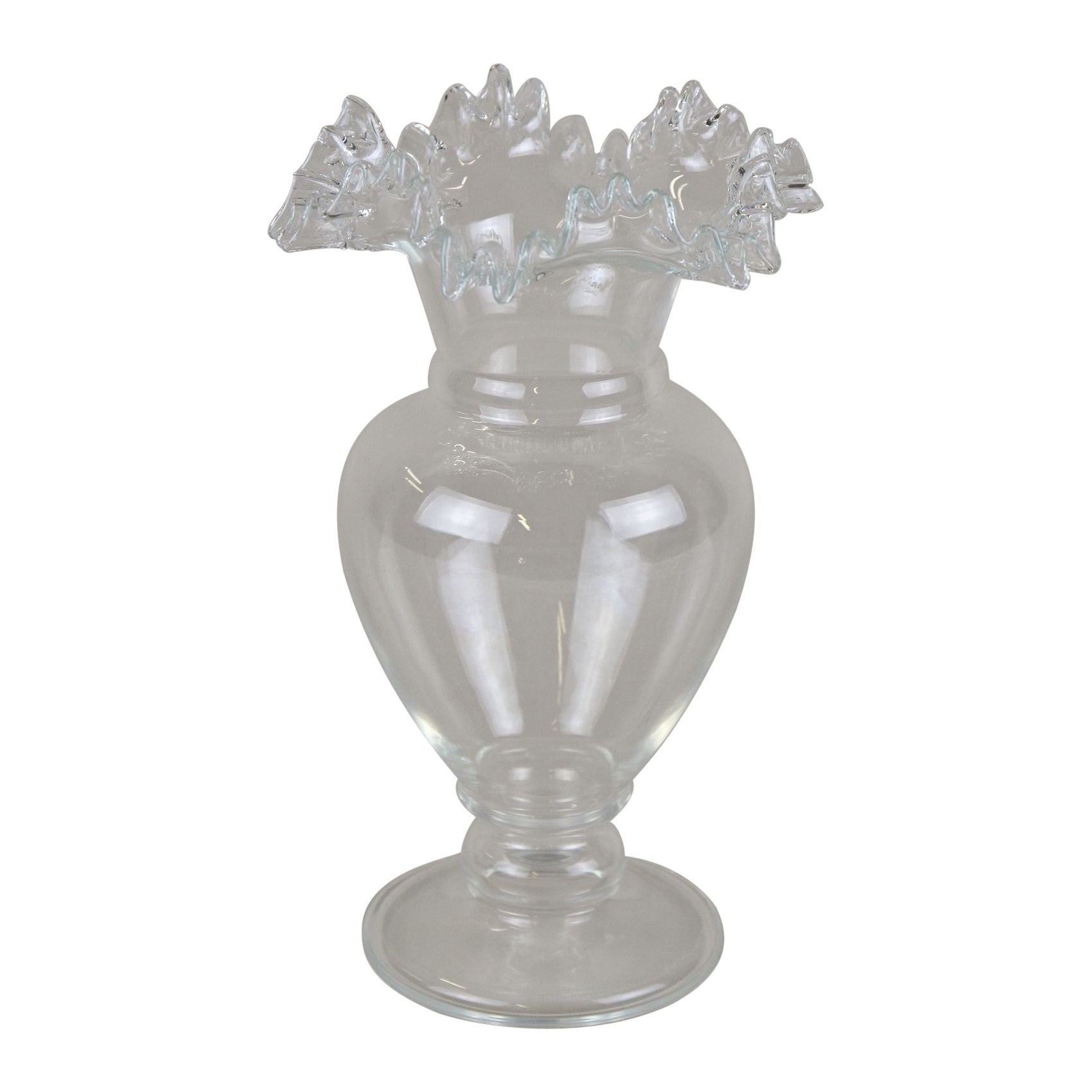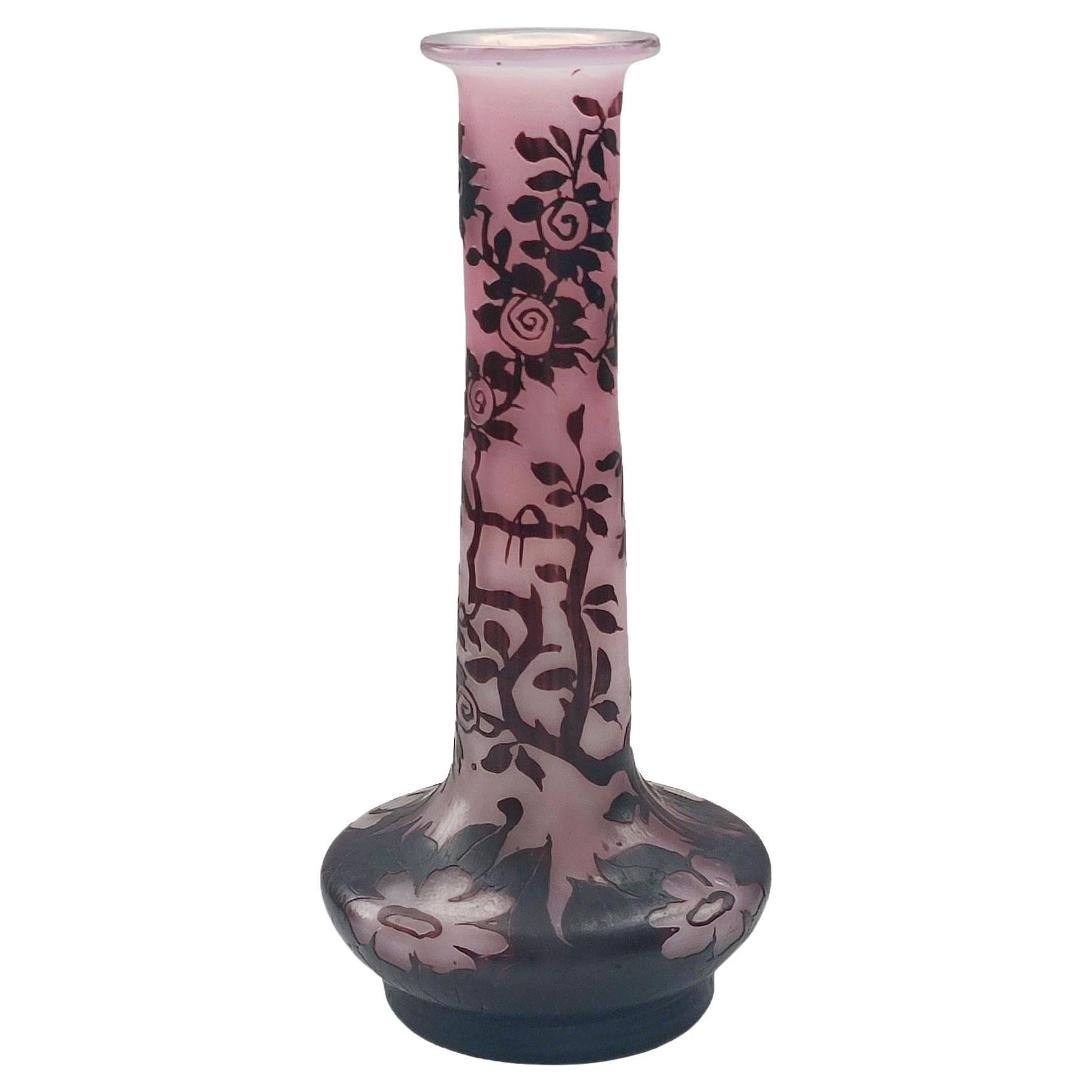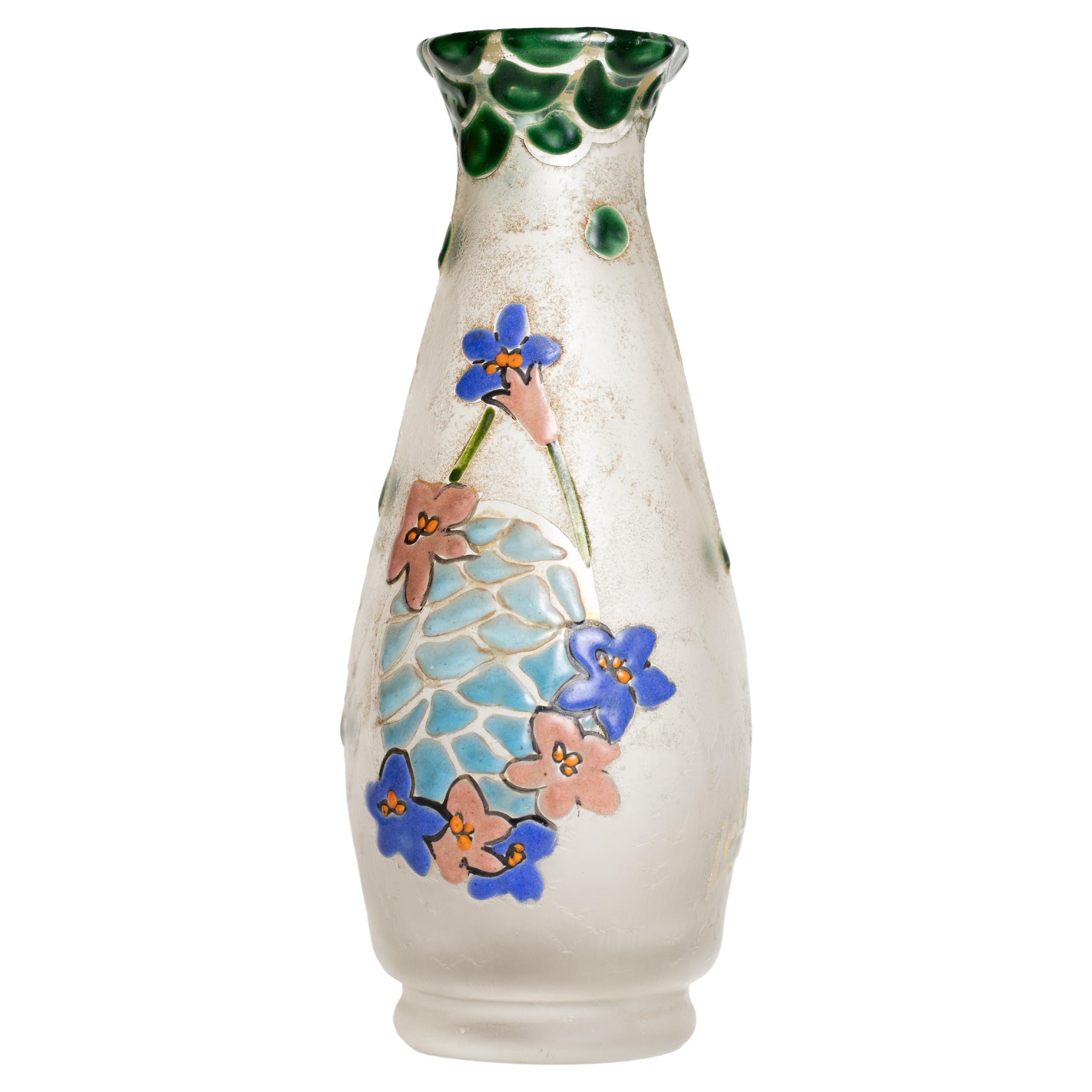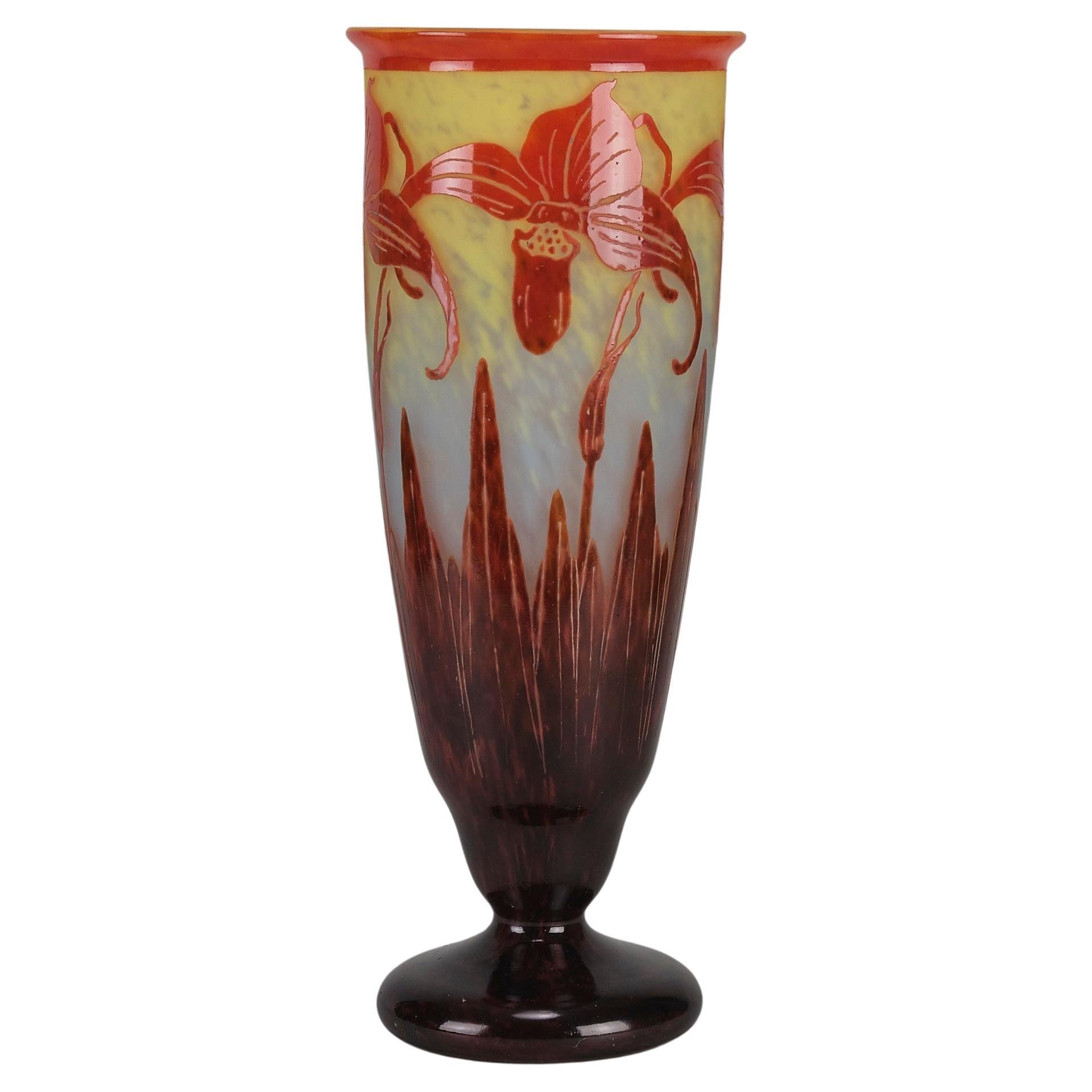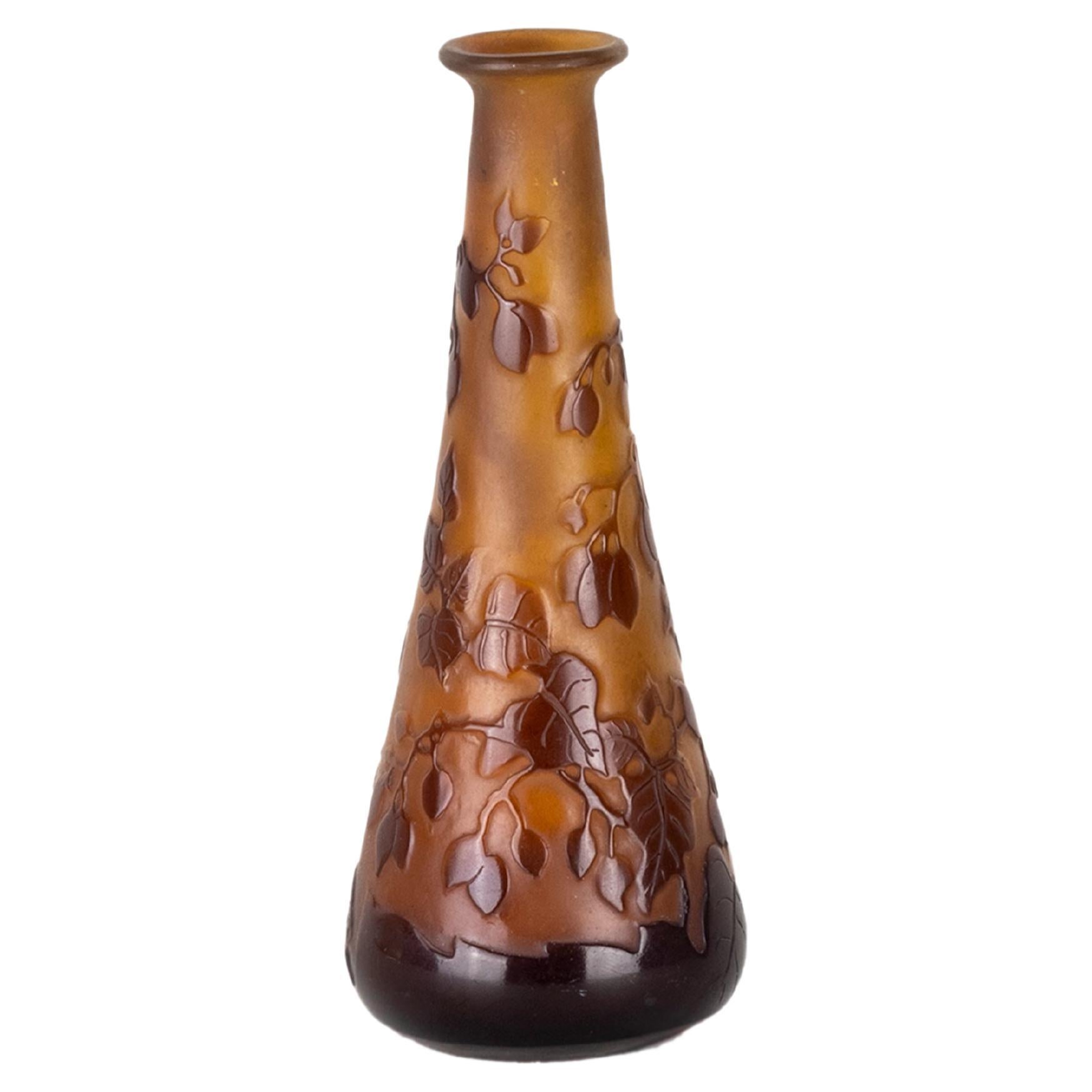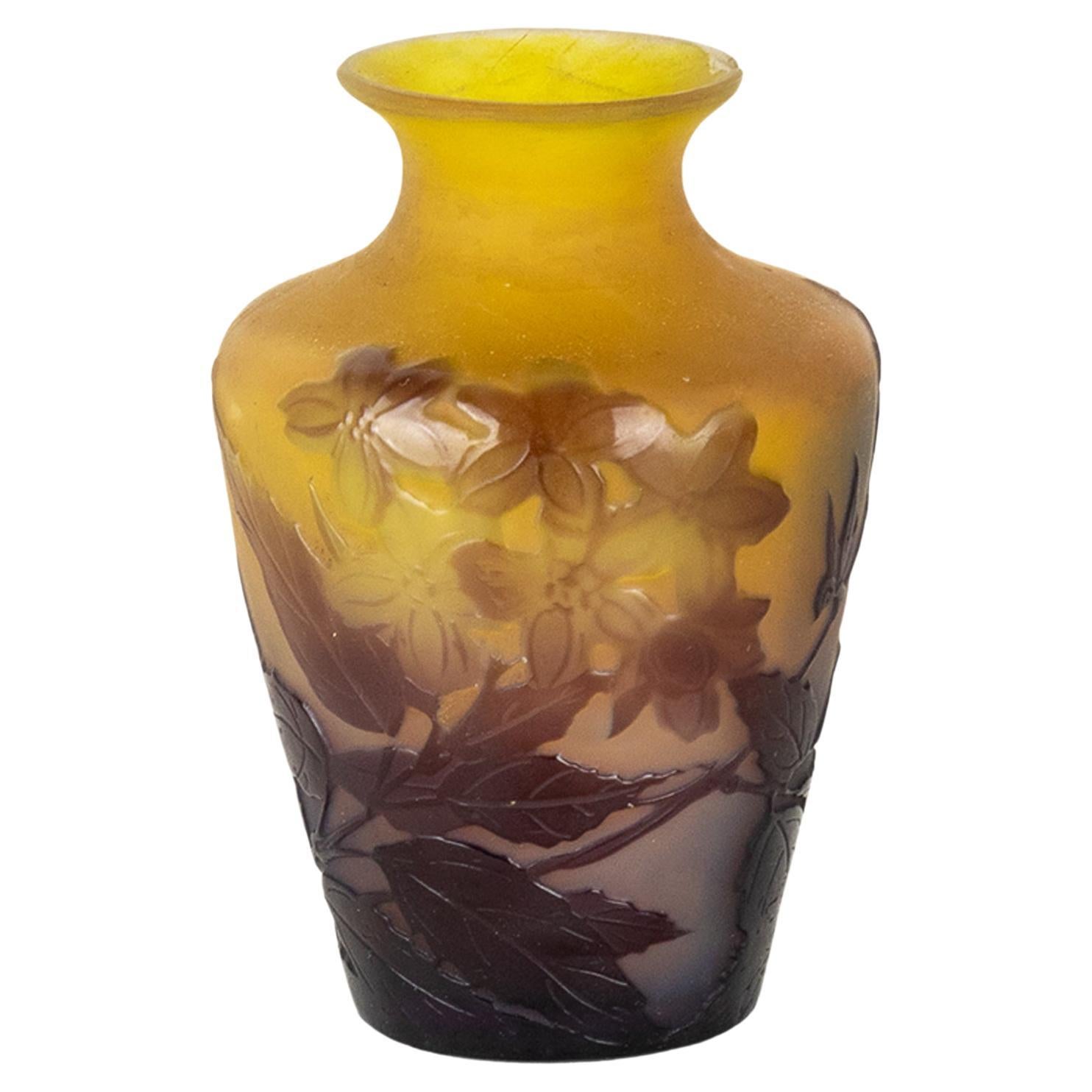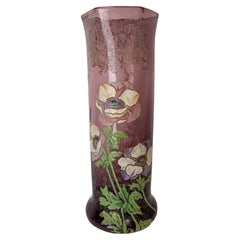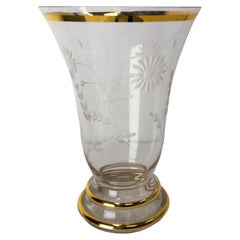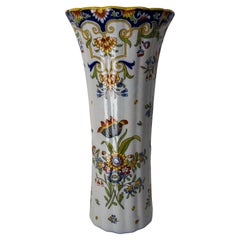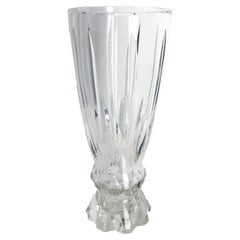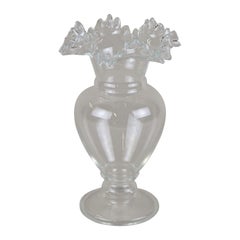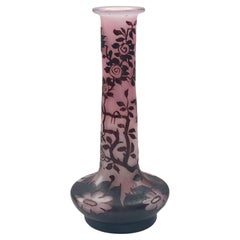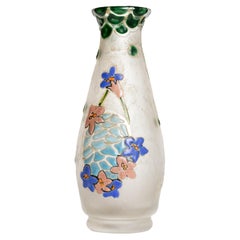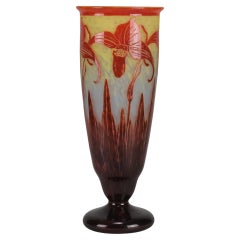Items Similar to French Glass Vase with Iris and Lacusted Decoration Art Nouveau, circa 1900
Want more images or videos?
Request additional images or videos from the seller
1 of 10
French Glass Vase with Iris and Lacusted Decoration Art Nouveau, circa 1900
$596.48
£440.93
€500
CA$827.35
A$901.99
CHF 476.60
MX$11,092.40
NOK 5,926.09
SEK 5,578.62
DKK 3,807.24
About the Item
French art nouveau glass vase
An iris is engraved in the foreground of a lacustrine decoration.
Iris is one of the typical flowers of art nouveau representations
Irregular vase neck and foot, typical of Art Nouveau.
Maison Edmond Enot (see the brand engraved under the vase: E. Enot, 13 rue Pyramide, Paris)
A pair of this series of vase was sold at Christies
Good condition with signs of use.
Shipping:
P 9 L 10 H 17 0.8 kg.
- Dimensions:Height: 6.7 in (17 cm)Width: 3.94 in (10 cm)Depth: 3.55 in (9 cm)
- Style:Art Nouveau (Of the Period)
- Materials and Techniques:Glass,Engraved
- Place of Origin:
- Period:
- Date of Manufacture:circa 1900
- Condition:Wear consistent with age and use. Good condition.
- Seller Location:Labrit, FR
- Reference Number:1stDibs: LU4476230687082
About the Seller
4.9
Platinum Seller
Premium sellers with a 4.7+ rating and 24-hour response times
Established in 2006
1stDibs seller since 2019
700 sales on 1stDibs
Typical response time: 1 hour
- ShippingRetrieving quote...Shipping from: Labrit, France
- Return Policy
Authenticity Guarantee
In the unlikely event there’s an issue with an item’s authenticity, contact us within 1 year for a full refund. DetailsMoney-Back Guarantee
If your item is not as described, is damaged in transit, or does not arrive, contact us within 7 days for a full refund. Details24-Hour Cancellation
You have a 24-hour grace period in which to reconsider your purchase, with no questions asked.Vetted Professional Sellers
Our world-class sellers must adhere to strict standards for service and quality, maintaining the integrity of our listings.Price-Match Guarantee
If you find that a seller listed the same item for a lower price elsewhere, we’ll match it.Trusted Global Delivery
Our best-in-class carrier network provides specialized shipping options worldwide, including custom delivery.More From This Seller
View AllFrench Enamelled Glass Vase with Flowers Decoration Legras Art Nouveau, c. 1900
By François-Théodore Legras
Located in Labrit, Landes
French purple glass vase
Hand painted enameled floral decor. Anemone flowers from François-Théodore Legras
The top of the vase is decorated ...
Category
Early 20th Century French Art Nouveau Vases
Materials
Glass
French Vase Glass Golden Neck and Base, Flowers Engraved, circa 1960
Located in Labrit, Landes
Vintage vase typical of the sixties.
Gilded glass with engraved daisy flowers.
French circa 1960
Very good condition.
Shipping:
Diam 16 H 23.5 cm 0.6 kg.
Category
Mid-20th Century French Mid-Century Modern Vases
Materials
Glass
French Vieux Rouen Faience Vase with Vegetal Patterns Art Nouveau, c. 1900
Located in Labrit, Landes
French faience vase from Rouen manufactures.
Features hand painted floral decor in a blue, orange, white and yellow and green palette
Good antique condition, apparent cracks on the i...
Category
Early 20th Century French Art Nouveau Vases
Materials
Faience
French Cristal Vase Sevres Manufacture circa 1960
Located in Labrit, Landes
French cristal vase from Cristallerie de Sèvres
The Sèvres manufactures are famous for their earthenware and crystal. They have existed since the 18th century.
Good condition with ...
Category
Mid-20th Century French Mid-Century Modern Vases
Materials
Crystal
French Crystal Vase Daume Manufactures Mid-Century
Located in Labrit, Landes
Crystal vase circa 1960, France.
from Daume manufactures in the East of France.
Good condition.
Shipping:
L 21 P14 H21 2,1 KG
Category
Mid-20th Century French Mid-Century Modern Vases
Materials
Crystal
Monaco Ceramic Vase Floral Decoration Mid-Century Signed Cérart Monaco French
Located in Labrit, Landes
Ceramic Vase from Maison Cerdazur Monaco made circa 1970.
The Manufacture de Porcelaine de Monaco was founded in 1972 by Erich Rozewicz with the suppor...
Category
Mid-20th Century French Mid-Century Modern Vases
Materials
Ceramic
You May Also Like
20th Century Art Nouveau Frilly Glass Vase, Austria, circa 1910
Located in Lichtenberg, AT
Extraordinary glass vase with frilly edge coming from the famous Art Nouveau period in Austria around 1900. The mouthblown clear glass body impresses with a beautiful bulby design. A great highlight on this Art Nouveau vase is the amazing looking, lovely frilly glass...
Category
Early 20th Century Austrian Art Nouveau Vases
Materials
Blown Glass
Very Rare De Vez Art Nouveau Cameo Glass Vase with Etched Floral Decor
By Devez
Located in Bochum, NRW
An attractive early 20th-century cameo glass vase acid cut and hand etched with birds, floral and foliage decor in a deep brown against a pink background, exhibiting excellent hand-f...
Category
Antique Early 1900s French Art Nouveau Vases
Materials
Blown Glass
Art Nouveau Glass Vase by Legras, 20th Century
By François-Théodore Legras
Located in Lisbon, PT
This cameo glass vase by the renowned French glassmaker François-Théodore Legras showcases the beauty and craftsmanship of the Art Nouveau period.
Created in the early 20th century,...
Category
Early 20th Century French Art Nouveau Vases
Materials
Art Glass
$3,530 Sale Price
20% Off
Early 20th Century Glass Vase entitled "Décor Orchidée" by Le Verre Français
Located in London, GB
A wonderful early 20th Century Art Deco glass vase etched with vibrant red orchids against a deep orange background interspersed with deep burgundy reefs exhibiting excellent colour ...
Category
Early 20th Century French Art Nouveau Vases
Materials
Glass
Art Nouveau Glass Vase With Foliage, Gallé, 1900s
By Émile Gallé
Located in Lisbon, PT
An Art Nouveau glass vase, attributed to Émile Gallé, features a graceful foliage motif in rich amber and brown tones.
The conical shape enhances the naturalistic relief of leaves a...
Category
Early 20th Century French Art Nouveau Vases
Materials
Art Glass
$4,823 Sale Price
20% Off
Art Nouveau Cameo Glass Vase With Flowers, Gallé, 1900s
By Émile Gallé
Located in Lisbon, PT
This exquisite Art Nouveau vase by Émile Gallé features acid-etched clematis flowers and leaves in warm brown and amber tones over a yellow ground. The design is meticulously carved ...
Category
Early 20th Century French Art Nouveau Vases
Materials
Art Glass
$3,669 Sale Price
26% Off
More Ways To Browse
Iris Glass
Iris Vase
Art Nouveau Iris
Vaso Murano
Venetian Glass Vases
Vienna Austria Vase
Yellow Blown Glass Vase
1970s Brutalist Bedroom Furniture
Bronze Ormolu Mounted Vase
Brown Terracotta Pot
Chinese Baluster
Chinese Crackle
French Ewers
Japanese 20th Century Blue White Vase
Murano Black Sommerso Glass
Murano Red And White
Rosenthal Studio Line Germany
Trumpet Glass
